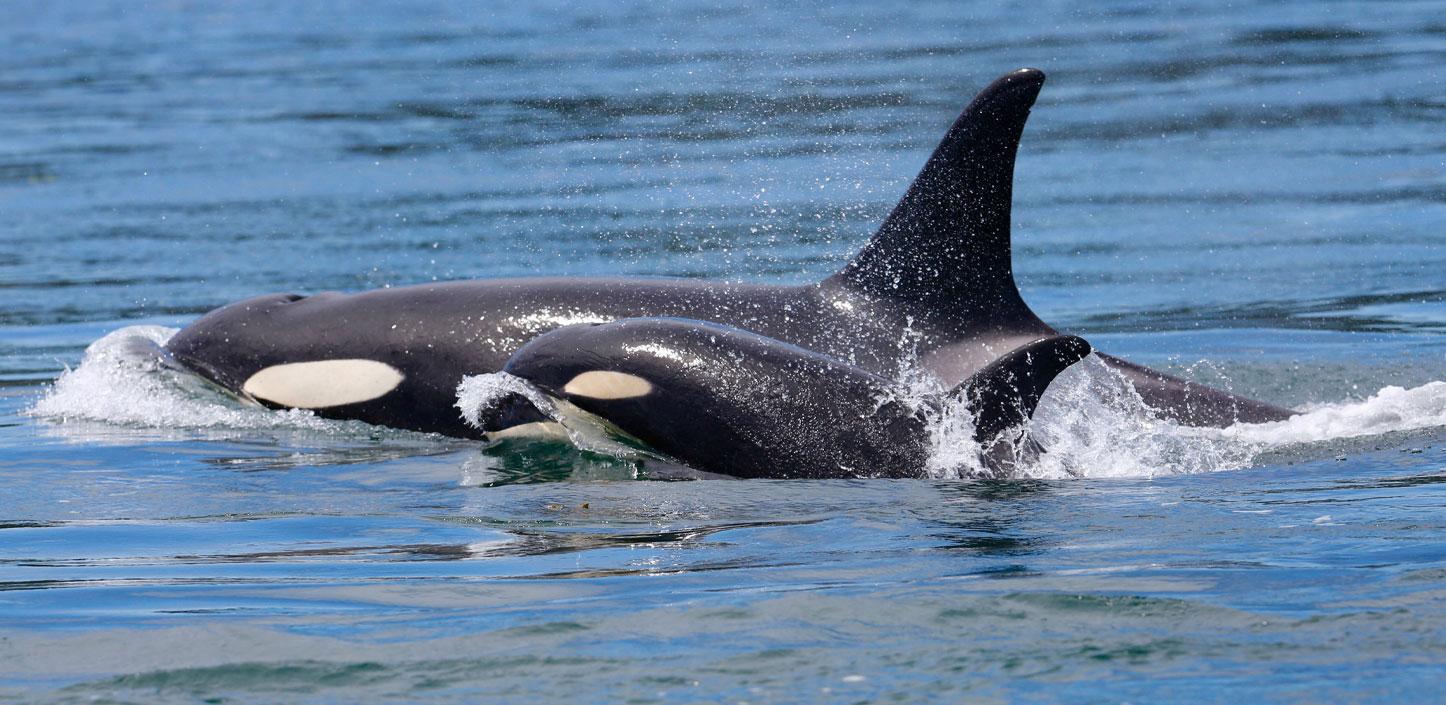
Killer Whale Cow and Calf Pollutant Transfer Study
Project Highlight
Download a PDF version of this report here.
NMFS Northwest Fisheries Science Center, a grantee of the Killer Whale Research and Conservation Program, has completed the first-ever study to quantify contaminant transfer from mothers to their calves during both gestation and lactation for any whale or dolphin species.
It is important to understand risk of contaminant exposure to females and calves, particularly for the Southern Resident killer whales, which have low calving success rates, and to provide data that can help understand future contaminant loads in individual killer whales.
This unique study and partnership with SeaWorld demonstrates the utility of using trained killer whales to acquire samples that are unobtainable in the wild, in order to provide data and information needed to address a key risk factor facing Southern Resident killer whales. While these trained whales are not exposed to the same level of pollutants, it is still possible to examine the pollutant markers in the milk to measure proportional transfer. Not only will the data provide necessary information to quantify and predict contaminant transfer from female killer whales to their calves to help populate bioaccumulation models, but these results also identify a period in which newborn killer whales might be at greater risk from contaminant exposure.
Key findings of this research
- While contaminant transfer occurs during gestation (in the womb), most persistent organic pollutants (POP)s are transferred during lactation (while nursing).
- The highest levels of transfer of POPs from mother to calf are in the first few months after birth.
- The number of calves the mother has had, and therefore previous transfers of accumulated POPs, impacts the amount and rate of transfer to the current calf.
The most dramatic changes in female milk transfer occur during the first 5 months of the 15-month lactation period, which is a concern for calves. Newborn calves are still developing after birth, and the largest influx of toxins soon after birth may lead to neurological and other issues that can persist.
The calf serum POP levels also significantly increase during the earlier months of the lactation period. The study provides critical data to refine models that predict changes in killer whale POP levels over time and assess risk of circulating POPs in newborn killer whales.
For more information
Through strategic partnerships and deployment of grant funding, the Killer Whale Research and Conservation Program seeks to increase our knowledge of killer whale populations and to help overcome barriers to recovery.
Investments under this program target increasing prey populations, reducing impacts from vessels and pollutants and support of game-changing research to inform management.
View a video about the Killer Whale Research and Conservation Program, featuring this project:
Program Partners: SeaWorld, Shell Oil Company, National Oceanic and Atmospheric Administration, U.S. Fish and Wildlife Service